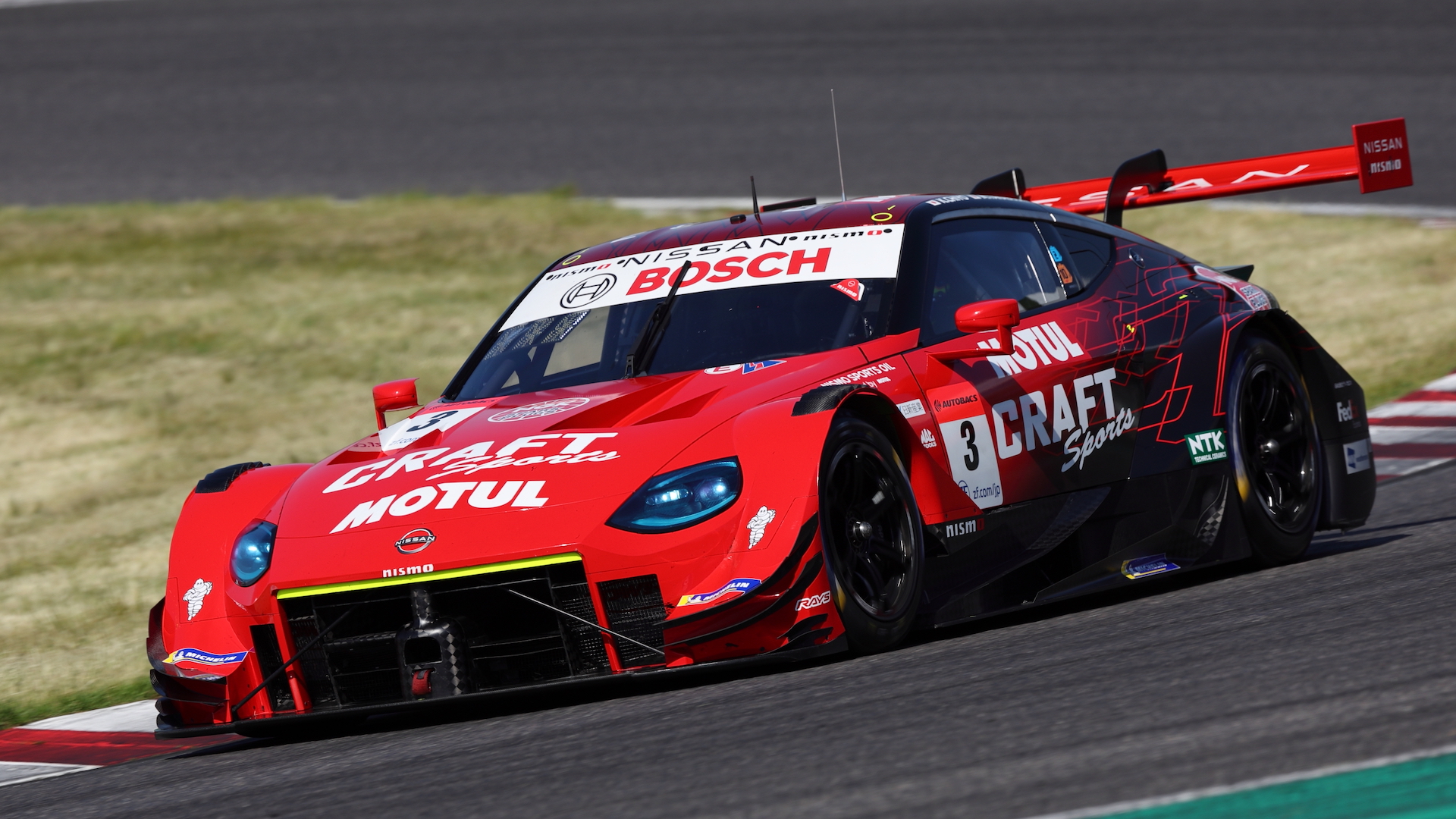

We may earn revenue from the products available on this page and participate in affiliate programs. Learn more ›
Japan’s top-level GT race series Super GT ran a test of a new carbon-neutral fuel on Monday that it plans to use next season. The gas is grabbing headlines, however, as drivers have reported that fumes from the fuel are hurting their eyes on track. There doesn’t seem to be any cause for alarm, though, as the available evidence suggests the problem isn’t stemming from the green(ish) gas itself.
The fuel tested was ETS Racing Fuels GTA R100, which ETS says is “derived from cellulosic material that is converted into hydrocarbons and oxygenates.” (It’s basically fermented, distilled plant matter.) It was run in both GT300 and GT500 cars, whose engines had been retuned on dynamometers to burn the unique blend. Driver impressions published on the official Super GT website indicate it performed pretty much identically to conventional race gas—with some caveats. It smelled different, while some drivers reported decreased power outputs, and others complained of unpleasant fumes on track.
Multiple drivers remarked on the fuel’s different scent, which they likened to kerosene or “a mix of [pre-mix] gasoline and oil from a racing go-kart” according to Motorsport.
“It may be because this is the first time, but I was conscious of the smell from the other machines’ exhaust in the pit area,” said Ukyo Sasahara of the Red Bull Honda NSX-GT. Competitors Hiroki Yoshida in the carbon-bodied Toyota GR Supra GT and Seji Ara in the BMW M4 found this translated to different exhaust fumes, which Ara in particular found unpleasant.
“I tried things like adjusting the flow of air in the cockpit, but I was still bothered by the [exhaust] smell,” Ara said. “Also, I felt that there was less feeling of power during acceleration in the middle stages.”

Ara was one of three drivers quoted reporting decreased power, though none took issue with drivability. One noted “deeper” upshift points, while Ryuichiro Tomita of the Nissan GT-R reported bigger backfires on upshifts. Between power losses and evidence of unburned fuel in the exhaust (as suggested by bigger backfires and noxious exhaust fumes), it’s likely the engines were running rich; that their tunes simply aren’t optimized. That was the conclusion reached by Honda NSX-GT project leader Masahiro Saiki, who reportedly observed a similar phenomenon during a renewable fuel test in a Super Formula car.
“If we can burn the fuel properly, then the smell should disappear. If the fuel is burned completely, nothing will be left,” Saiki told Motorsport. “The smell is a little strong [compared to gasoline], perhaps because the raw materials used are different. I think they are trying to mix materials extracted from various bio-based raw materials to meet high-octane standards. Some fuel manufacturers say that the smell can be changed by changing the raw materials, although there’s also the matter of cost control to consider.”

As slapdash engine tunes go, one that runs rich with too low of an air-fuel ratio is safer. It’ll come up short on power, release nastier exhaust, and get bad mileage, but it’s not at risk of running lean (that’s a high air-fuel ratio) and encountering knock, which could cause a catastrophic failure. In all likelihood, the drivers’ complaints aren’t rooted in the fuel itself, but in engines whose tunes just aren’t optimized for the new fuel. With a whole winter ahead for Super GT tuners to iron out the kinks, odds are drivers won’t be able to spot the difference when Super GT resumes racing next year.
Got a tip or question for the author? You can reach them here: james@thedrive.com
